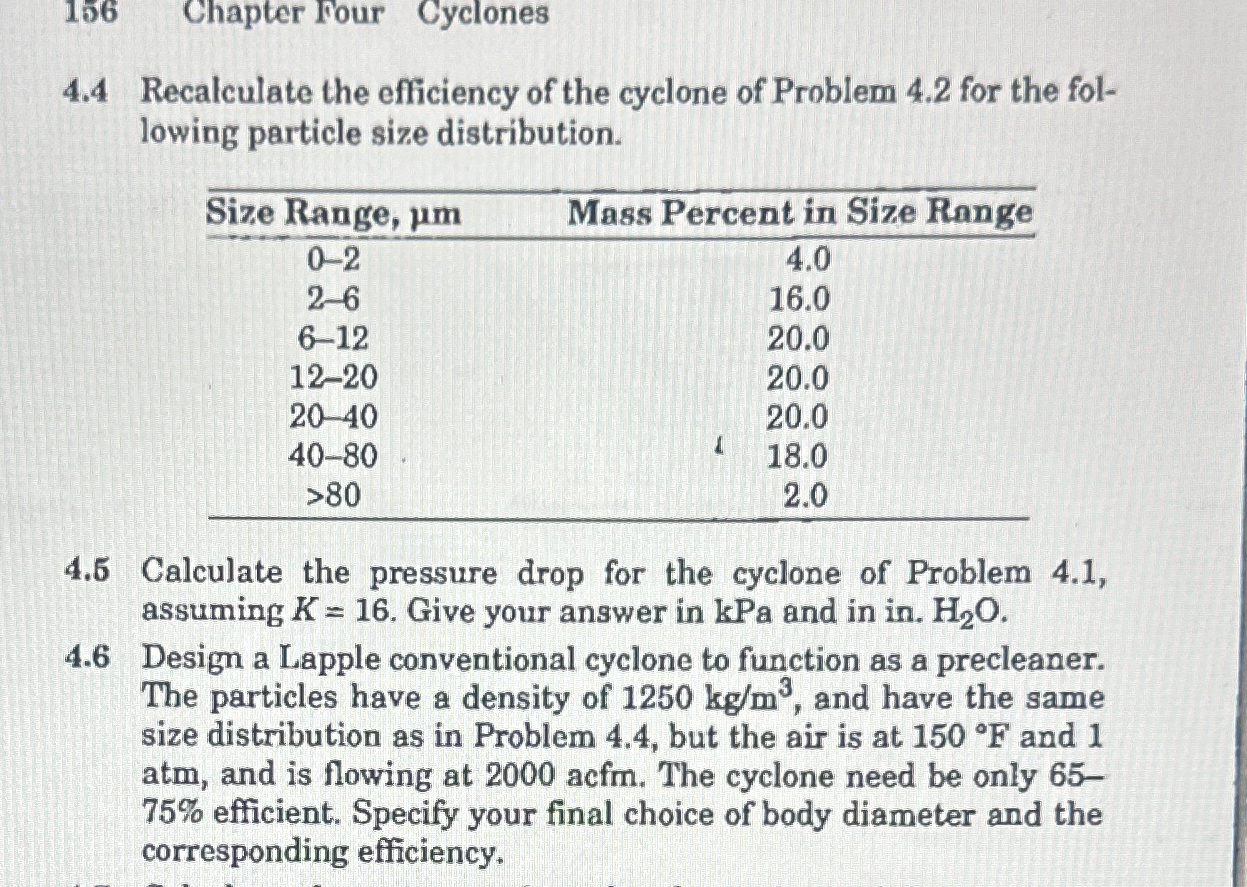Answered step by step
Verified Expert Solution
Question
1 Approved Answer
1 5 6 Chapter Four Cyclones 4 . 4 Recalculate the efficiency of the cyclone of Problem 4 . 2 for the following particle size
Chapter Four Cyclones
Recalculate the efficiency of the cyclone of Problem for the following particle size distribution.
tableSize Range, Mass Percent in Size Range
Calculate the pressure drop for the cyclone of Problem assuming Give your answer in kPa and in in
Design a Lapple conventional cyclone to function as a precleaner. The particles have a density of and have the same size distribution as in Problem but the air is at and atm, and is flowing at acfm. The cyclone need be only efficient. Specify your final choice of body diameter and the corresponding efficiency.
Need help with however included required info from disregard

Step by Step Solution
There are 3 Steps involved in it
Step: 1

Get Instant Access to Expert-Tailored Solutions
See step-by-step solutions with expert insights and AI powered tools for academic success
Step: 2

Step: 3

Ace Your Homework with AI
Get the answers you need in no time with our AI-driven, step-by-step assistance
Get Started


